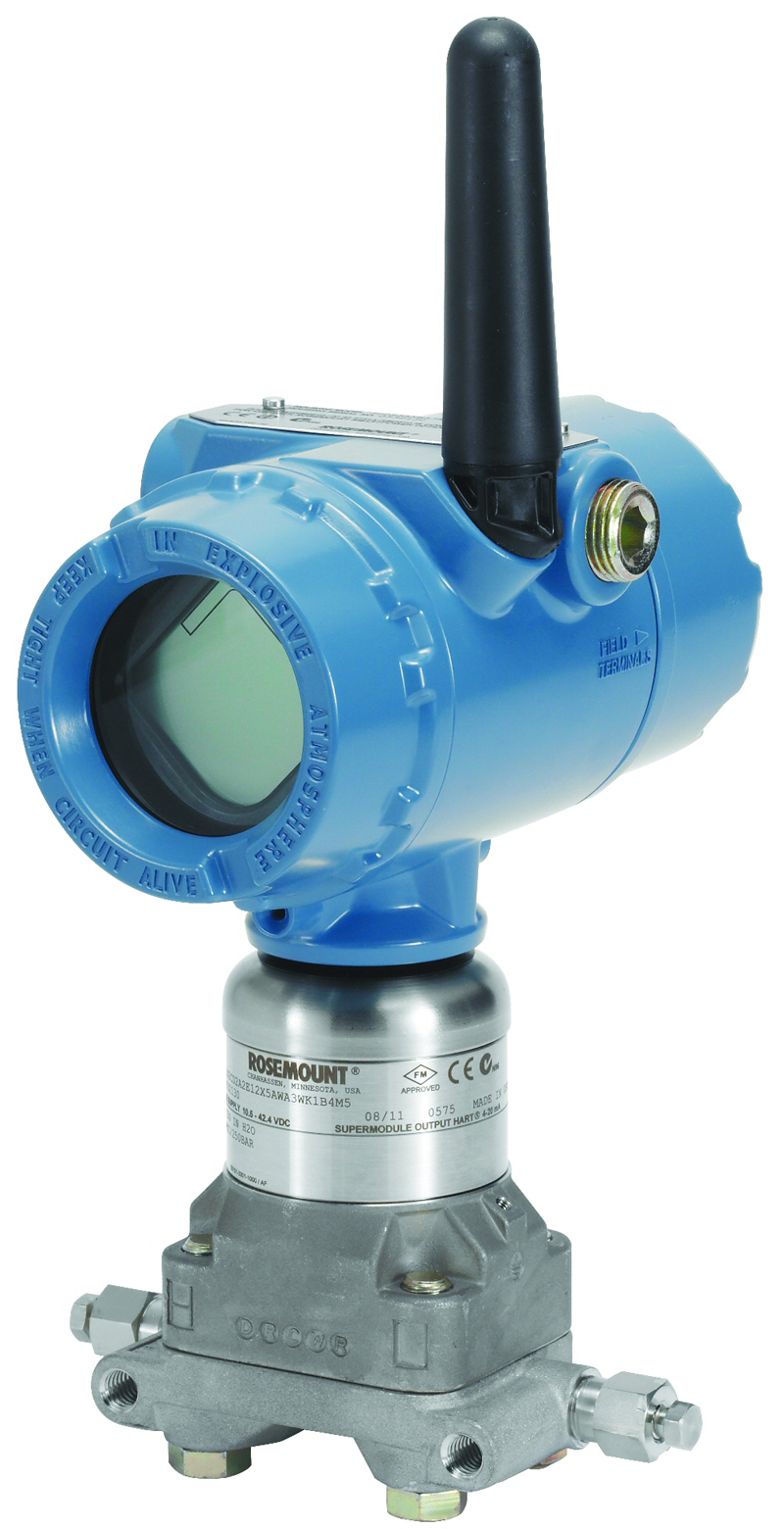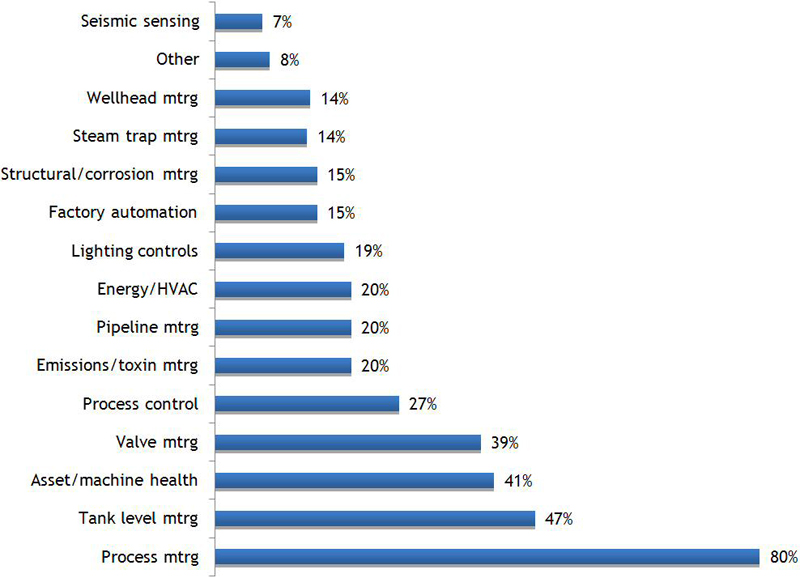Author:
Harry Forbes, Senior Analyst, Automation, ARC Advisory Group
Date
11/27/2012

Click image to enlarge
Figure 1: Emerson Rosemount's 3051S series wireless instrumentation exemplifies the benefits WSN brings to industrial applications: It can reduce total installation costs by 45% and total deployment time by as much as 75%, eliminating design and installation time and cost associated with wiring, conduit, cable trays, and junction boxes.
Wireless sensing is the most important new technology in process measurement to appear in decades. For this reason alone, it has attracted the sustained attention of ARC Advisory Group and other industry analyst organizations. While growth of wireless measurements in industrial applications has proven to be slower than most forecasts, wireless continues to grow much faster than the overall automation market. Looking at the changes in WSN (wireless sensor networking) during the past year, ARC is most impressed by the greater maturity of the industry along with significant new technical achievements. We believe that both will spur market growth because they enable WSN to serve a much larger set of customers. The events of the last year at WSN leader Dust Networks provide an excellent example of how these developments have changed—and will continue to change—the wireless-sensing market. Commercial Maturity Greater WSN industry maturity has come through a steady series of acquisitions. At present, much larger companies have acquired almost all the pioneering sensor-networking ventures. Most of the acquirers are well-established semiconductor suppliers, which have now snapped up virtually all the fabless WSN firms. Dust Networks has become one of the more recent, acquired in late 2011 by specialist Linear Technology. Fortune 1000 companies must carefully manage the technologies they employ if they are to meet their customer expectations. A technology sourced from a group of venture-stage fabless semiconductor firms represents a major supply-chain risk to global firms whose customers expect product support for many years going forward. Today the list of WSN suppliers no longer represents an exceptional risk to the supply chain of global giants like Emerson, GE, Honeywell, and Siemens (figure 1).

For Dust Networks, besides joining a $1.5 billion chip company with global presence, the acquisition has enabled Dust to adopt a mature testing and commercialization process. Linear uses this internal rigor to ensure the high quality it uses as a differentiator. Roughly, 40% of Linear's business is with industrial customers, so Linear is familiar with their demands. Similarly, Dust Networks chose to focus on industrial WSN applications from its earliest days (figure 2). Through dialog with industrial customers, Dust developed its product mantra of low power and reliable delivery. These two attributes have governed Dust's design decisions for years and skillfully pursuing both goals accounts for Dust's market-share leadership in industrial WSN applications. Dust has adopted Linear's processes for its latest product release. The Dust acquisition, then, is not merely a plan to grow volume through wider distribution. Rather, it also adds value through improvements to Dust's internal development and commercialization processes. Technical Growth WSN has also grown technically during the past year. The most important development is the completion of the e revision to the IEEE 802.15.4 standard. Though the 15.4 standard published years ago, most commercial WSN applications have used non-standard MAC (medium access) rules to optimize the performance of their own networks. WirelessHART, ISA100.11a, ZigBee, and IPv6 sensor networks all depended on a customized MAC layer to achieve low power consumption and reliable end-to-end message delivery. This limits the value of the IEEE standard, because applications needed their own specialized MACs. IEEE 802.15.4e makes important changes to the defined MAC layer. It creates a standard and fully defined MAC that can support diverse types of networks. This includes 6LoWPAN-compressed IPv6 networks. It also supports the synchronized TDMA (time division multiple access) network properties used in industrial low-power applications such as WirelessHART and ISA100.11a. Finally, 15.4e accommodates extensions, so that these diverse networks—as well as future ones—can extend the standard MAC without violating the standard itself. This decouples WSN development from the three- to four-year long IEEE standards-development process. It will give the IEEE standard greater value and a much longer life, enable greater interoperability among WSN silicon and network stacks, and enable future WSN technologies to leverage an existing and fully standard MAC.

Dust Networks and 15.4e The new standard incorporates many of the technology enhancements that Dust Networks discovered and championed from its earliest days, and has continued to use right through the newest SmartMesh WH and SmartMesh IP products (figure 3). But, the new standard was developed not only from Dust's technology but also with extensive and enthusiastic contributions from many major suppliers, notably including Siemens. Dust now employs its most recent chip design, which conforms to 15.4e, in both WirelessHART and IPv6 products. Using the latest chipset is a big benefit for WirelessHART industrial customers, since Dust has driven down the power consumption of its chipsets by roughly 50% with each new generation. In battery-powered industrial devices, this provides an energy surplus enabling devices to have longer life and to serve in applications that previously consumed too much battery power. The ability to serve both WirelessHART and IPv6 applications from a single chip design also positions Dust for growth in both markets. IPv6 applications can use a wider variety of system architectures. In particular, they can route packets from field sensors to analytics and applications that are truly location-independent, including cloud-based applications. It remains to be seen what impact the Cloud will have on the wireless sensing market, but the combination of high scalability and low cost offered by cloud services may well enable new applications that are not feasible when built using traditional WSN gateways. Dust Networks continues to focus on products that lead the market in terms of low energy consumption. This lengthens the life of devices in industrial applications, which is particularly valuable to both industrial OEMs and their customers. Dust Networks also uses its huge experience base to optimize its network manager. In most WSN applications, the network manager is both extremely active and mission-critical. Active network management permits a sensor network to achieve highly reliable end-to-end service combined with low energy use. This is possible only because the network manager continuously makes decisions that dynamically reconfigure the network so that it operates reliably over point-to-point links that are inherently unreliable. Another area to watch may be energy harvesting. Though energy harvesting represents an ongoing technical challenge, it is a very active development area. Low power products will be the first to benefit from any new harvesting components that emerge. ARC Advisory Group